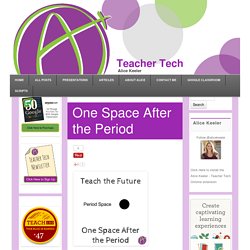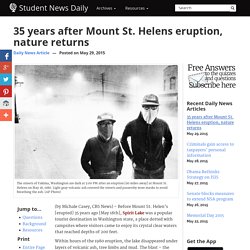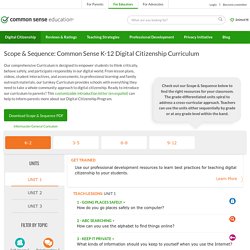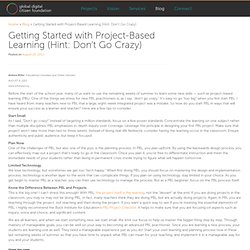

One Space After the Period. Modern practice is one space after the period.

Many of us, myself included, were taught to put 2 spaces after a period. The reason 2 spaces was the norm was because of typewriters. A typewriter gave every character, including an i and a period, the same amount of width on the page. Computers do not do this. Notice how snug the letter i is within the words. Every style guide (MLA, Chicago, Turabian) except for APA call for a single space after the period. Space Invaders: Why you should never, ever use two spaces after a period. Grammar Girl: Two Spaces After the Period If you learned to type on a typewriter, you’re going to hate what I say next: Do not put two spaces after a period. Cult of Pedagogy: Nothing Says Over 40 Like Two Spaces after a Period! It is important for our students that we are updating our curriculum and practices to prepare them for the world they are going into.
Take a look at this Edudemic article on “The 8 Skills Students Must Have For The Future.” Digital Literacies - Literacy in a Digital World. Building Your Roadmap for 21st Century Learning Environments. How can educators successfully address the unique and diverse needs of 21st century students?

How do schools successfully prepare their students for the demands of college and career? We all know that instituting a single change, by itself, will not revolutionize education. To fundamentally change the results we get—how students are educated—we need to thoughtfully examine all aspects of the education system, including teaching, infrastructure, assessments and leadership. Using the Roadmap, educational leaders can determine where their system is and where they need to go in each of the topic areas, find examples of successful transformations and guidance on how to navigate their own paths to creating 21st century learning environments. Start by deciding into which stage your school fits in each of the topic areas. 35 years after Mount St. Helens eruption, nature returns. The streets of Yakima, Washington are dark at 3:00 PM after an eruption [90 miles away] at Mount St.

Helens on May 18, 1980. Light gray volcanic ash covered the streets and passersby wore masks to avoid breathing the ash. (AP Photo) (by Michale Casey, CBS News) – Before Mount St. Helen’s [erupted] 35 years ago [May 18th], Spirit Lake was a popular tourist destination in Washington state, a place dotted with campsites where visitors came to enjoy its crystal clear waters that reached depths of 200 feet. Within hours of the 1980 eruption, the lake disappeared under layers of volcanic ash, tree limbs and mud. “That landslide completely buried the old lake,” University of Washington Tacoma’s Jim Gawel, who has spent the past decade studying the lake, told CBS News.
It seemed as if one of the region’s great natural landmarks – a lake by some accounts 4,000 years old – was gone forever. “It was a shock to people how quickly the lake recovered,” Mr. Scope & Sequence. Get Trained Use our professional development resources to learn best practices for teaching digital citizenship to your students.

Onboard Students: Digital Passport Introduce students in grades 3-5 to Digital Passport, our award-winning suite of games that help onboard students to the foundational skills of digital citizenship and Internet safety. Teach Lessons: Unit 1 Teach Lessons: Unit 2 5 - Picture Perfect How can photos be changed on the computer, and how can that affect your feelings about the way you look? Teach Lessons: Unit 3 Extend Learning: Digital Bytes Challenge teens to take a real-world look at digital citizenship through student-directed, media-rich activities in Digital Bytes.
Give Assessment Assess your students’ learning of lesson objectives and gauge their understanding and attitudes through interactive unit-level assessments. Engage Families Invite parents into the conversation with our Connecting Families program and resources. Getting Started with Project-Based Learning (Hint: Don't Go Crazy) Andrew Miller, Educational Consultant and Online Educator AUGUST 6, 2012 www.edutopia.org Before the start of the school year, many of us want to use the remaining weeks of summer to learn some new skills — such as project-based learning (PBL).

One of the things we stress for new PBL practitioners is, as I say, "don't go crazy. " It's easy to go "too big" when you first start PBL. I have heard from many teachers new to PBL that a large, eight-week integrated project was a mistake. So how do you start PBL in ways that will ensure your success as a learner and teacher? Start Small As I said, "Don't go crazy! " Plan Now One of the challenges of PBL, but also one of the joys, is the planning process. Limited Technology We love technology, but sometimes we get too "tech happy. " Know the Difference Between PBL and Projects This is the big one! We are all learners, and when we start something new, we start small.
Related. Digital Literacy and Citizenship Classroom Curriculum. Literacy in the Digital Age.